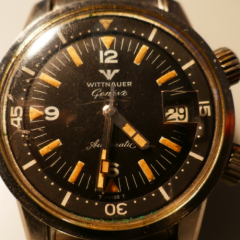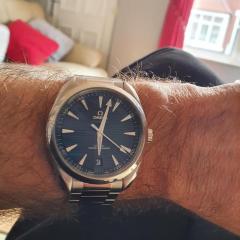-
Recently Browsing
- No registered users viewing this page.
-
Topics
-
Posts
-
By RichardHarris123 · Posted
It opened today, excellent as usual. -
By nevenbekriev · Posted
I will advice to share the idea first here before doeing something to the movement -
When you move the index which changes the timing from an extreme fast to an extreme slow, is there a big change in beat error? Obviously there will be a big change in timing. If there is a big difference in BE then this is strongly inferring the the end-curve of the hairspring isn't set correctly or/and the collet is central to the jewel on the balance cock, because the hairspring that is breathing between the curb pin and boot is being pushed and/or pulled when you move the index from left to right. Also not having the hairspring set correctly can dramatically reduce the amplitude. A quick check is to take power off the movement and move the index from extreme fast to slow and with high magnification see if the hairspring sits nicely between the curb pin and boot at all times (give the balance a spin and watch the hairspring - has it got total freedom?) or if it moves by being pushed or pulled by the curb pin or boot. I'm guessing it is the latter. I think that may be a possibility to your problem.
-
By RichardHarris123 · Posted
I can't get windingstens.com to open but you need a few measurements. -
All Done, Here are the finished pictures: This one shows the generic "one-size-fits-all" base which accepts the bespoke rings - notice that the parametric movement OD (27.40 mm) automatically prints on the ring 🙂 From another angle: Here is the ring about to go into the base: And finally the base and ring together: Here it is next to a pen for scale: On my system with 20% fill each ring will take about 18 mins to print, but I am sure this could be optimised: Here is the screenshot of the spreadsheet in FreeCAD, you just need to change one value to create the ring in cell C3, (the base doesn't need any changes). I just uploaded the files to printables link here, but also include here as a fake pdf, please change the .pdf to .zip to make the file work once downloaded: Modular Movement Holder.pdf Any feedback welcome! I'm also going to make a parametric ring insert for rectangular/oval movements - but I just finished a parent teacher evening so too tired now 🙂
-








Recommended Posts